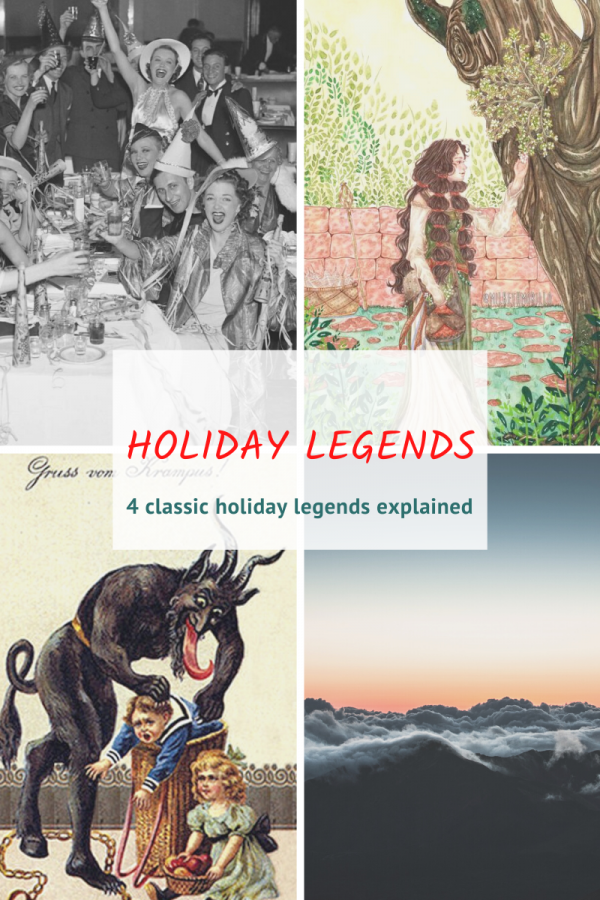Holiday Legends
December 4, 2020
The holidays and their traditions make for a wonderful time of year, but what about their legends? Most are well known, but the origins of such accepted customs are meagerly known. Everyone loves a good story, and here are four stories interpreting the most famed holiday legends:
Santa Klaus
Everyone has heard of Old St. Nicholas, but the lesser-known facts surrounding his existence, or non-existence, is the history behind his legend. In modern times, Santa Clause is thought of as a cheerful man with a white beard, a red suit, and a bottomless red bag full of toys, which he gives to good boys and girls on Christmas Eve. Believe it or not, there was once a time when Sant Nicholas walked the earth as the patron saint of children, but this was in the third century. St. Nicholas became known for his kindness, making him the main character in many following legends. Fast forward several hundred years in 18th century New York, a Dutch figure of the name Sinter Klaus emerged. This name became famous, translating to the American popular culture name, Santa Claus. Now, who do we have to thank for the childish image we have in our head of a man flying around on a magical sleigh delivering presents? That would be Clement Clarke Moore, the author of the familiar title “Twas the Night before Christmas.” His poem helped popularize the modern image of Santa. What followed was even more popularizing of this Christmas legend, making it one of the most well-known tales globally.
Mistletoe
This notorious holiday tradition of kissing under a twig of Mistletoe has perhaps depreciated the plant’s ancient powers and the folklore’s origin. Thousands of years ago, ancient Roman and Greek cultures cherished Mistletoe’s acclaimed healing properties. The plant became known for its natural medicinal value as well as fertility. The romantic significance came with the tale from Norse Mythology, where the goddess of love secured an oath from all plants that they would not harm her dying son. The son was killed, but the gods resurrected him pleasing the goddess so much she declared the Mistletoe a symbol of love, vowing to kiss anyone who passed under it. Mistletoe’s value of fertility and vitality infuse into Christmas celebrations. The kissing tradition sparked among English servants in the 18th century and spread to mainstream society. The early custom was that men could steal a kiss from any woman caught under the Mistletoe and to refuse was terrible luck. This tradition continues, but as a more trivial excuse to kiss your significant other.
Krampus
Horror enthusiasts gather; this one is for you. Krampus is unlike the merry figure of Santa Clause; he is instead an evil opposite. This symbolic creature incorporates a tradition from Germany, Austria, and Hungary into a frightening image around the holidays. The blood-thirsty demonic monster with claws, horns, and a very long tongue, is said to haul children in his sack to save for later as food. It so happens that this figure is celebrated with festivals before Christmas, balancing the jolliness of Christmas with an eerie counterpart. The legend began centuries ago, but the church willfully abated this evil influence in the 1800s. Despite disapproval, Dec. 5th is known as Krampus Day in other countries, when locals dress up as creatures and participate in parades to scare people.
Making Noise on New Years Eve
Greeting the New Year with rambunctious gatherings, roaring countdowns, and noisy fireworks is a classic image of New Year’s Eve. A New Year signifies renewal, and celebrations across the world are in desire of happiness and prosperity. The motive of the accumulative noise made on Eve was an old conviction that the noise would drive away from the evil spirits. Today, it has become more of a novelty and exciting to cheer loudly for a New Year promise.

